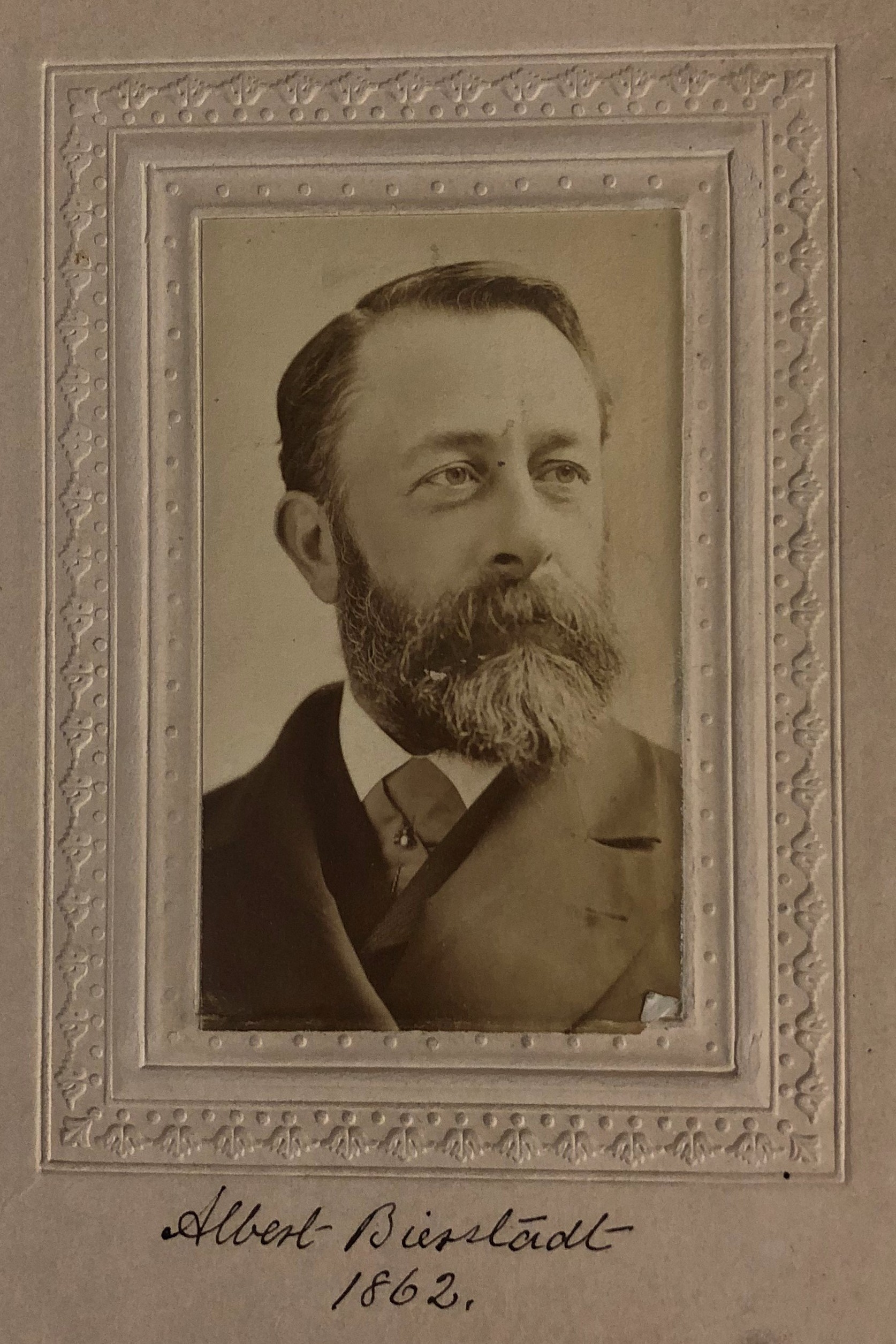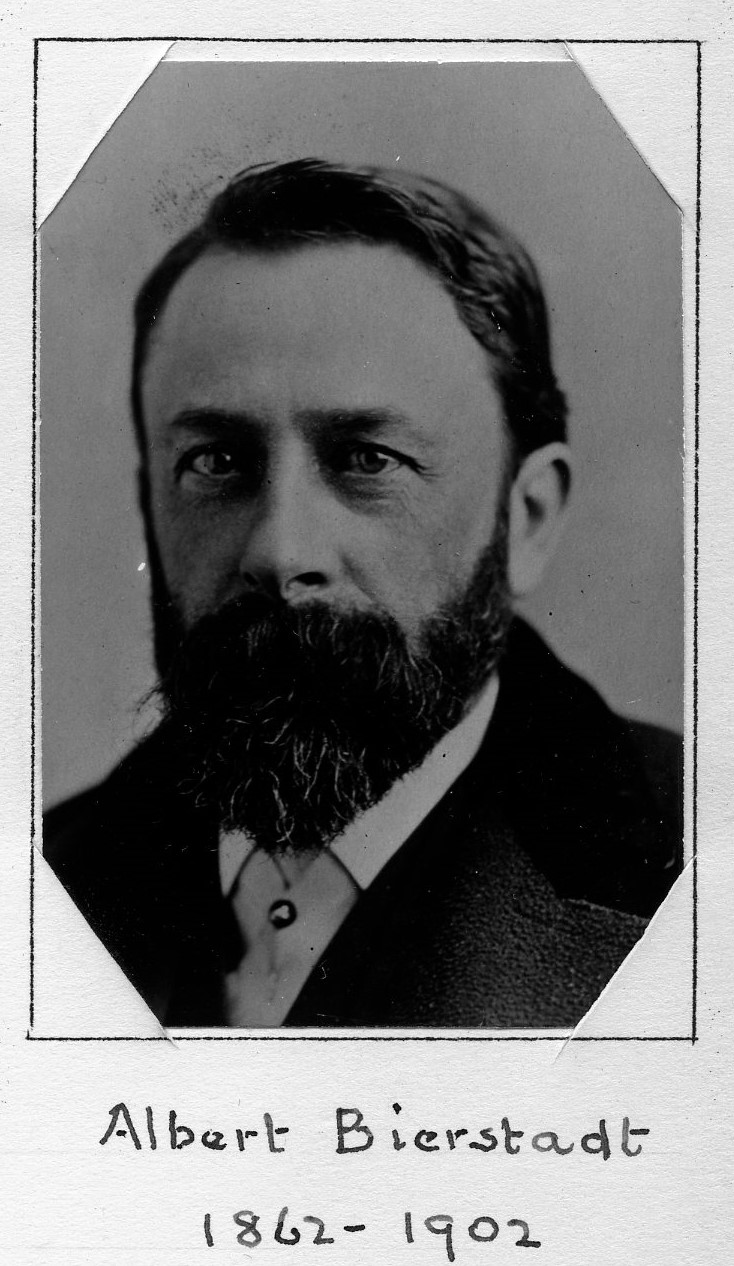Artist
Centurion, 1862–1902
Born 7 January 1830 in Solingen, Germany
Died 18 February 1902 in New York (Manhattan), New York
Buried Rural Cemetery , New Bedford, Massachusetts
, New Bedford, Massachusetts
Proposed by John Frederick Kensett, Louis Lang, William Stanley Haseltine, and Mr. Suydam (may refer to D. Lydig Suydam or James A. Suydam)
Elected 4 April 1862 at age thirty-two
Proposer of:
Seconder of:
Century Memorials
Albert Bierstadt was one of the most widely known of American painters, and, though a German by birth and by his art education, his work for many years was intimately American in subject and was accepted as representative in this and in other countries. Mr. Bierstadt had the qualities and the experience of the pioneer. He had in youth to struggle with poverty and privation, and he faced them with indomitable resolution, ingenuity, shrewdness, and self-command. He got his training in painting in Düsseldorf, where he was born, and in Rome in the early ’50’s. On his return to the United States he undertook an arduous course of studies for the series of striking and mostly large pictures which constitute his title to fame—The Rocky Mountains, Storm in the Rocky Mountains, Laramie Peak, Valley of the Yosemite, The Sierra Nevada, and many others that have found places in collections of this country and of almost every country of Europe. He received decorations from France, Austria, Germany, Bavaria, Belgium, and the Sultan of Turkey. Undoubtedly he did much in calling attention to our landscape art and to the magnificence of our scenery, especially that of the Western mountains. If his name was not so often heard in later years, it was in part due to the fact that the fashion in art, as in literature and many another pursuit, changes with time. The ideal to which he devoted such strenuous and patient effort has its value, and it may again be taken up, for the American art that does not seek to render the grandiose in American scenery cannot be said to be complete. Mr. Bierstadt was extremely attached to the Club, and until recently a most constant attendant, one of the gallant band who maintained and transmitted the tradition of
“Peace here, grace and good company.”
Edward Cary
1903 Century Association Yearbook
Bierstadt “was among the most energetic, industrious, and internationally honored American artists of the nineteenth century” (K. Avery, The World of the Hudson River School). He was born in Solingen, Germany, and brought to New Bedford, Massachusetts, when he was two years old. In 1854 he returned to Germany to study painting, and while in Europe he made many field trips along the Rhine, in the Alps, and in Italy. He often painted with fellow artists Worthington Whittredge and Sanford Gifford.
On his return to New Bedford, he quickly became the city’s most prominent artist, organizing in 1858 a large exhibition of paintings—including fifteen of his own works—that brought him to national attention. In 1859 he was invited to join General Lander’s expedition to survey a wagon route to the Pacific, the first of his three trips west. While on these trips he would make oil sketches on paper and then return to his studio where they often became huge panoramic paintings. These works, especially of the Rocky Mountains, brought him immediate and overwhelming popularity that secured his renown as a “western” artist and as the foremost competitor of Frederic E. Church in the field of monumental New World landscapes. Bierstadt’s most poignant image is The Hetch-Hetchy Valley, California (1874–1880). The valley is gone forever, inundated by the waters of O’Shaughnessy Dam in 1938.
After 1880, his reputation substantially declined in the face of changing tastes, and he experienced a series of personal misfortunes that included the destruction by fire of his country studio in 1882 and the death of his wife in 1893.
James Charlton
“Centurions on Stamps,” Part I (Exhibition, 2010)


